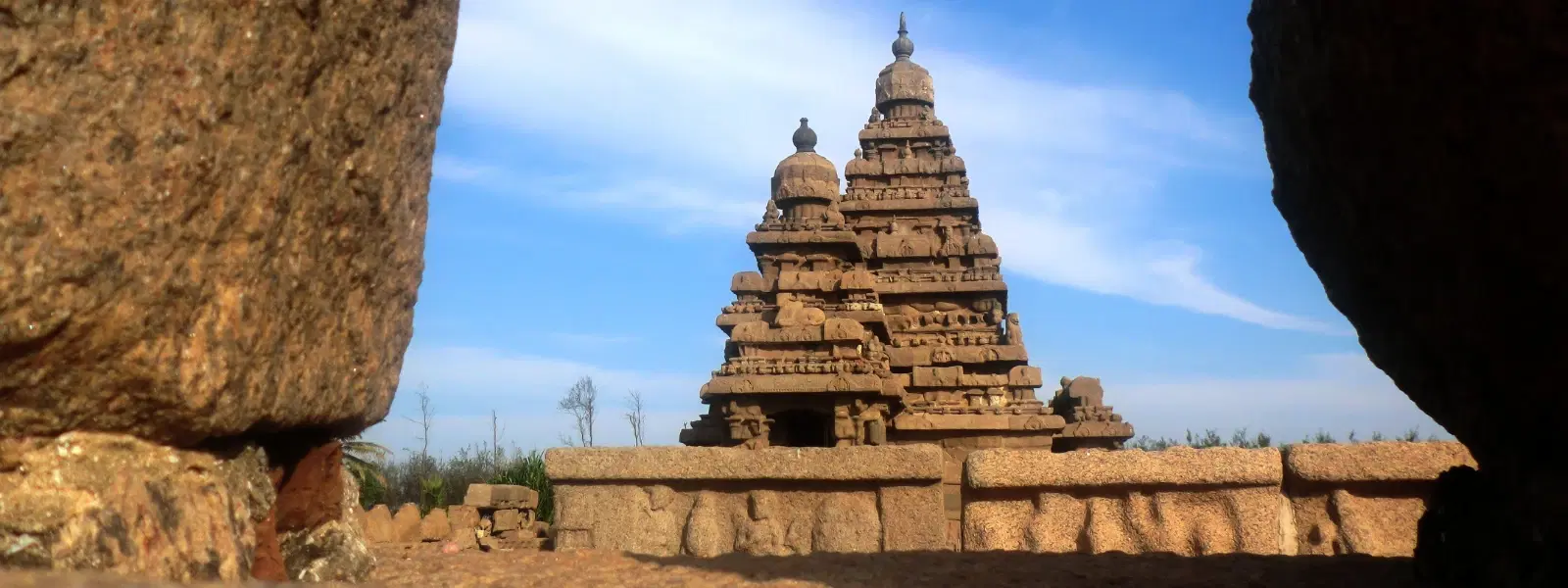
Hotels
•04 min read

The Vaital Deula Temple in Bhubaneswar immediately captures the eye with its enigmatic, intricate design and rich history. Its unique blend of ancient Kalinga temple style with profound tantric influences makes it one of the most fascinating landmarks in Odisha. In this post, we explore FAQs about the Vaital Deula Temple's unique style, history, and cultural importance, offering insights that help you appreciate why it stands out among the iconic temples of Bhubaneswar.
The architectural marvel of the Vaital Deula Temple is largely due to its distinctive Khakhra style, which is best recognized by its boat-shaped shikhara. Unlike the more common Rekha Deula or Pidha Deula styles found in many temples across Bhubaneswar, the Vaital Deula uses this design to evoke a sense of movement that mimics the gentle curves of a boat. This creative divergence makes it not only a fascinating subject for historians but also a visual treat for visitors seeking unique temples in Bhubaneswar.
Beyond its unique structure, the Vaital Deula Temple also stands out for its integration of tantric traditions. This influence is evident in the intricate carvings and ritualistic elements that adorn the temple. Among these details is the remarkable depiction of Goddess Chamunda, whose fierce yet compassionate image underscores the tantric practices that were an integral part of temple rituals. The sculptures and motifs are not mere decorations but symbolic narratives interwoven with spiritual significance.
Did you know? The Vaital Deula Temple is one of the rare temples in Odisha that prominently incorporates tantric symbolism in its architecture, making it a fascinating study for historians and spiritual seekers alike.
At the heart of this architectural gem lies a rectangular sanctum crowned by a boat-shaped roof that sets it apart from other historic structures in Bhubaneswar. The temple's walls are adorned with delicate carvings that depict mythological scenes and symbolic imagery, offering a window into the spiritual and cultural milieu of the time. When compared to nearby wonders such as the Mukteshwar Temple, the Vaital Deula’s design reveals a bold departure in design elements, particularly in its embrace of the Khakhra style.

The broader Kalinga temple style forms the backdrop against which the Vaital Deula Temple’s uniqueness is highlighted. While many temples in Bhubaneswar strictly adhere to the classical Rekha Deula or Pidha Deula forms, the Vaital Deula deviates with its Khakhra character. This deviation not only accentuates its distinctiveness but also enriches the spectrum of Odisha temple design by adding a layer of complexity through its tantric influences. Within the Kalinga architectural framework, it proudly stands as an example of innovation and spiritual symbolism.
The origins of the Vaital Deula Temple trace back to a time when both art and spirituality were deeply interwoven into the fabric of society. Its construction, rooted in the rich dynastic eras of ancient Bhubaneswar, reflects the prevailing social and religious ideologies. Historically, the temple played a pivotal role not just as a place of worship, but also as a cultural hub where tantric rituals were performed, contributing to a vibrant tapestry of local traditions and beliefs.
Bhubaneswar, often hailed as the "City of Temples," owes much of its mystical allure to monuments like the Vaital Deula. In the context of a city renowned for its ancient temples, this temple’s unique architectural language and symbolism make it indispensable. It finds a revered place among the list of unique temples in Bhubaneswar, narrating stories of ancient rites, spiritual evolution, and the seamless integration of art and devotion.
The temple walls of Vaital Deula are canvases that tell timeless tales. Carvings depicting deities, mythological narratives, and intricate tantric symbols cover its surfaces. These artistic masterpieces are not merely decorative; they serve as conduits for spiritual messages that have been passed down through generations. Each figure and motif provides deeper cultural insights into the rituals and symbolic practices of ancient Odisha, inviting visitors to decode the layered meanings behind every stroke.
Central to the temple's spiritual persona is the depiction of Goddess Chamunda. As the presiding deity, her fierce incarnation stands as a testament to the powerful tantric practices that influenced the temple’s development. Unlike many other temples in Odisha, where deities like Shiva or Vishnu are predominantly worshipped, the emphasis on Goddess Chamunda makes Vaital Deula uniquely intriguing. Her inclusion in the temple's iconography serves as a potent symbol of protection and transformation during ancient ritualistic ceremonies.

The temples in Bhubaneswar predominantly follow the Kalinga architectural style, which includes Rekha Deula, Pidha Deula, and Khakhra Deula sub-styles.
The Vaital Deula Temple features a unique Khakhra style, characterized by a boat-shaped shikhara and intricate tantric carvings.
Rekha Deula refers to temples with a tall, curvilinear shikhara, such as the Lingaraj Temple in Bhubaneswar.
The Lingaraj Temple represents the Rekha Deula style, a hallmark of Kalinga architecture.
Tantric influence in Odisha temples is evident in their carvings, rituals, and depictions of tantric deities like Chamunda, as seen in the Vaital Deula Temple.
The Vaital Deula Temple in Bhubaneswar is a remarkable testament to the rich legacy of Odisha's temple architecture. Its unique Khakhra style, deeply intertwined with tantric influences, sets it apart from many other ancient structures in the region. From its eye-catching boat-shaped design to its symbolic carvings and historical significance, this temple continues to inspire historians, spiritual seekers, and wanderers alike. Its cultural significance as a true gem among Bhubaneswar’s ancient temples makes it an essential stop for anyone exploring the heritage of Odisha.